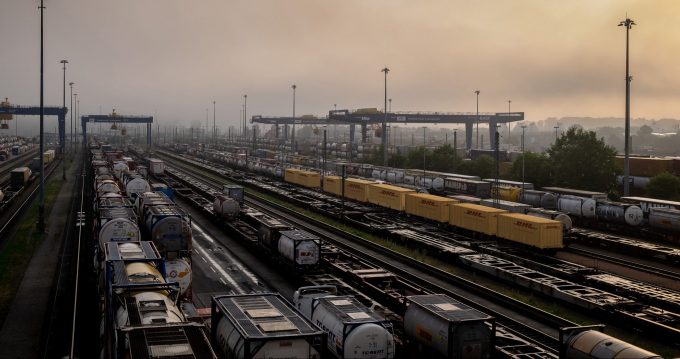Liners unveil Asia-Europe FAK price hikes to arrest steady rate decline
Container shipping lines are looking for a hike in Asia-Europe spot freight rates, announcing a ...

Shippers and forwarders hunting capacity on Asia-Europe trades have been advised to focus on overland routes, as available ocean and air freight capacity hits all-time lows.
During the Journal of Commerce Container Trade Europe webinar yesterday, DHL Global Forwarding head of ocean freight Europe Markus Panhauser, said with capacity on China-Europe rail services also near full capacity, shippers should consider using overland trucking instead, which was proving to be faster than trains.
Once you take out air and ocean freight, he said, “rail is the primary product, and trucking is the alternative to that when you need to speed your shipments up”.
Mr Panhauser said the westbound rail leg was currently “chock-a-block”, which meant rates had increased significantly, despite the fact that China-Europe rail services had been suffering from recent delays caused by military movements at the Kazakh-China border, and there had also been congestion issues at the Poland-Belarus border hub of Malaszewicze.
“There can be delays of up to seven days on the route – and no one expected this to happen. We are now running up to 50 trucks a week from China to Europe,” he said, adding that a number of other multinational forwarders, including Ceva and DSV, had also launched Asia-Europe road freight services.
Meanwhile, European exporters to Asia should also look to the railways, Mr Panhauser said, “at the moment there is plenty of space on the eastbound trains out of Europe – there’s a lot of attractive deals on shipments from Europe to Asia.”
DHL, in combination with rail providers, runs 11 westbound trains a week from China to Europe, as well as six a week eastbound, and Mr Panhauser argued that the strong growth on the tracks had led to the decline of another Asia-Europe fallback option: sea-air combinations.
“Sea-Air was a bigger product before than it is today, and that is mostly because of the growth of the rail services,” he said, adding that DHL was “really pushing the rail option rather than sea-air” because transit times were equivalent, while the capacity of the rail product was far higher.
However, he added, the sea-air combination was a viable option for some other trades, such as between China and Australasia.
Asked if this rail traffic could shift back to air in the future, he said: “We expect the air cargo market to be back in 2024; that’s when the full capacity will have been restored. This depends on the vaccines of course, and that travel and tourism markets have returned.”
Meanwhile, he warned, westbound China-Europe rail customers could soon expect to be paying higher freight rates.
“The Chinese government is cutting the state subsidies for rail, which will lead to cost increases,” he said.
Comment on this article